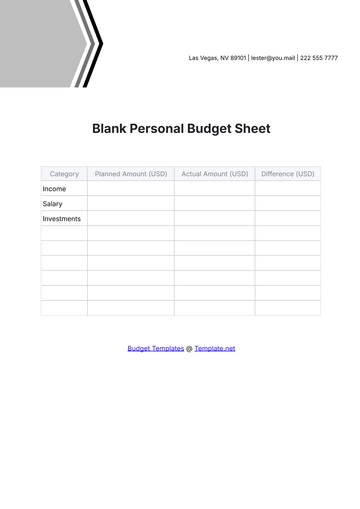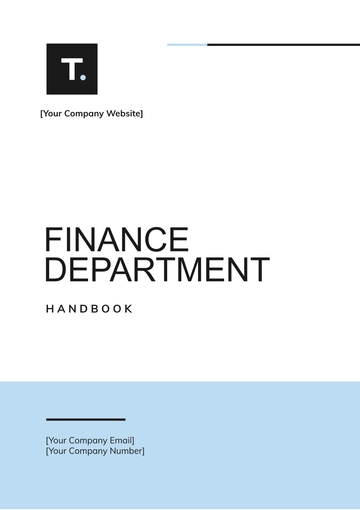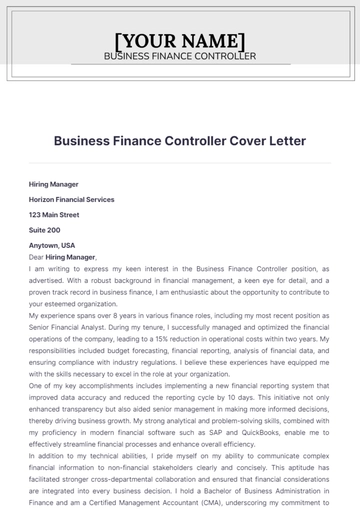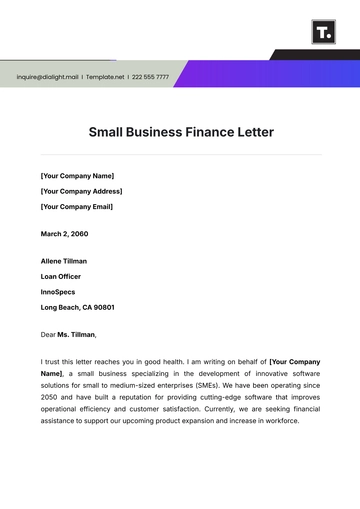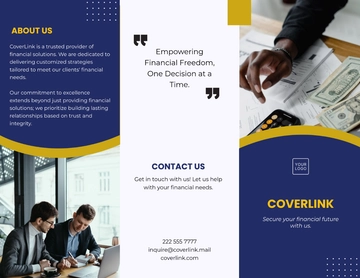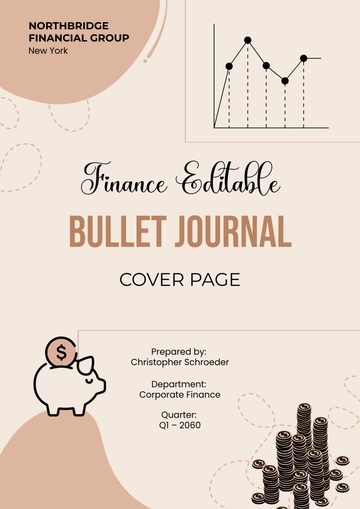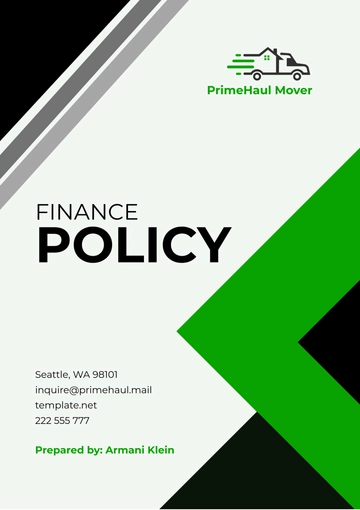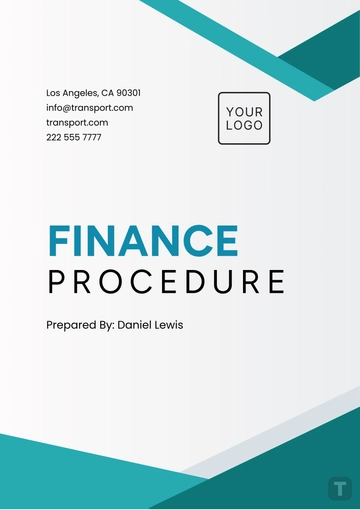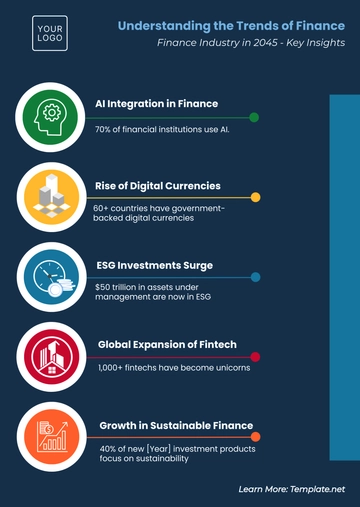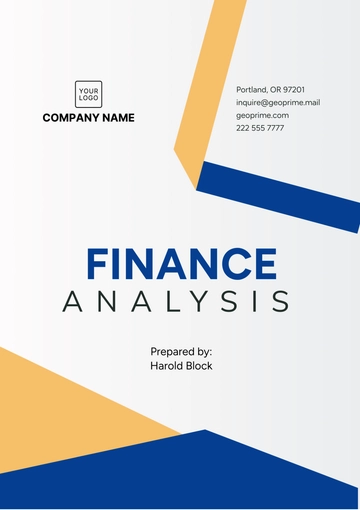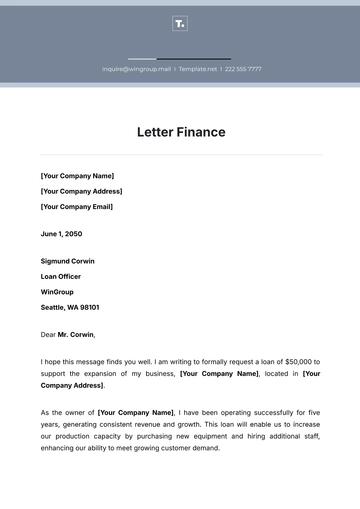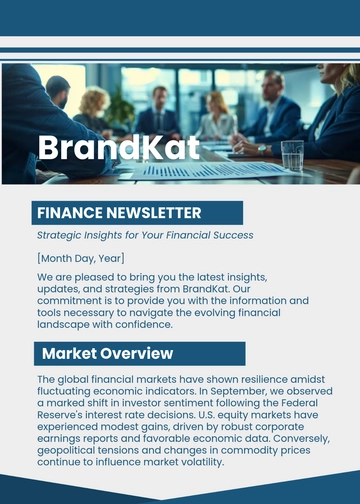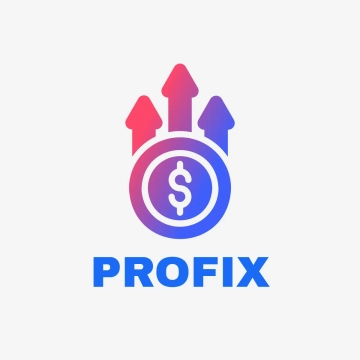Free Financial Case Study
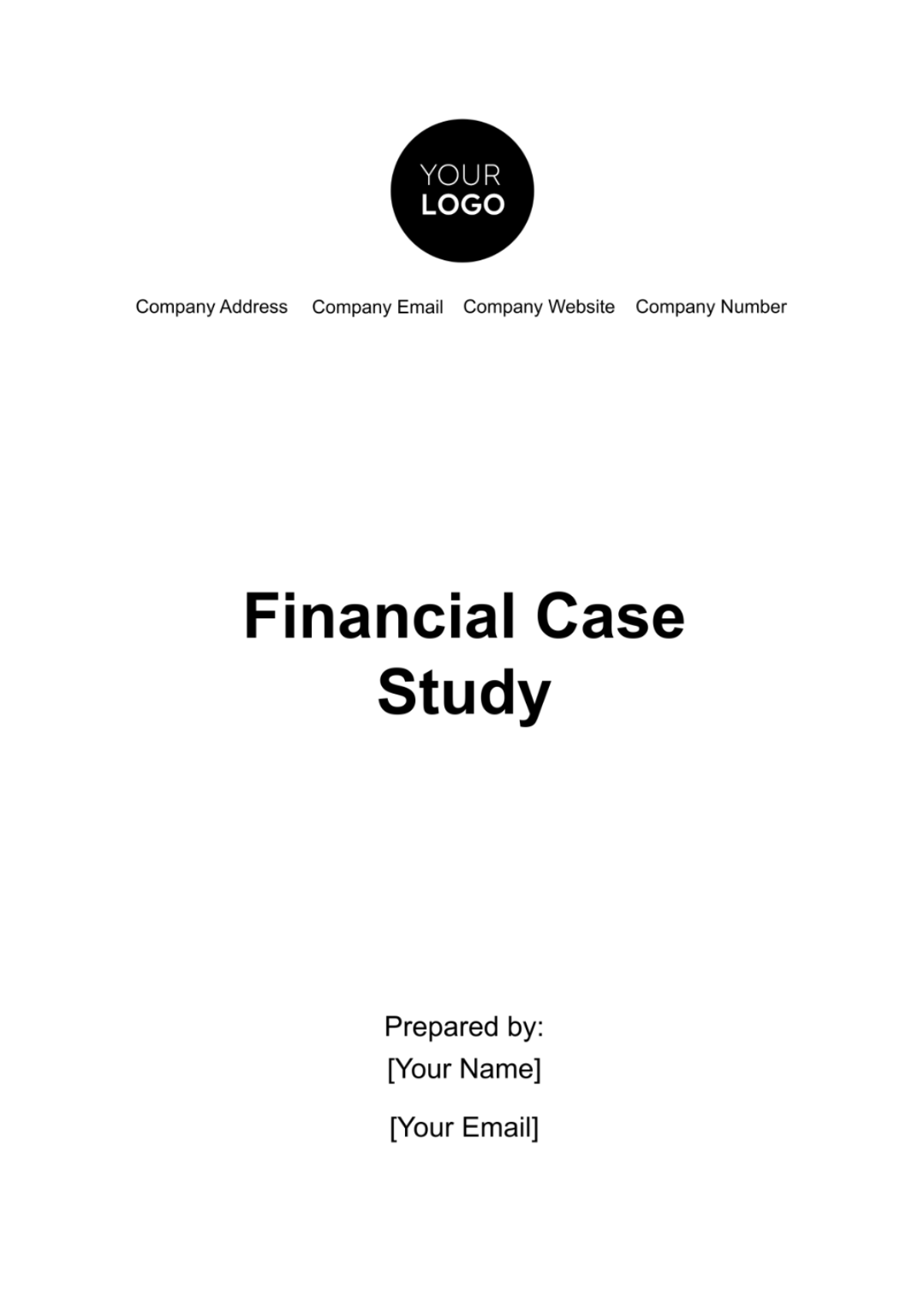
Introduction
In an era characterized by rapid technological advancements and evolving global markets, understanding the financial dynamics and strategic planning of leading corporations is more crucial than ever. This comprehensive case study delves into the financial landscape of [Your Company Name], a titan in the technology sector, with a focus on the fiscal years 2050 and beyond. [Your Company Name], known for its innovative prowess and market agility, presents a fascinating subject for analyzing how cutting-edge businesses navigate financial complexities in a fast-paced world. This study aims to provide an in-depth look at the company's financial planning, performance, and strategic initiatives, offering valuable insights into the practices that drive success in the technology industry.
Company Overview
[Your Company Name], a pioneering force in the technology sector, has carved out a significant niche in the market. The company's business model and market position reflect its adaptability and forward-thinking approach, which have been instrumental in its success.
Business Model
[Your Company Name]'s business model is a blend of innovation, customer-centric products, and strategic partnerships. Its portfolio includes cutting-edge software solutions, high-performance hardware, and AI-driven technologies. The company's revenue is generated through a mix of direct product sales, subscription-based services, and licensing agreements with other tech firms.
A key element of [Your Company Name]'s strategy is its investment in research and development (R&D). This focus has led to numerous breakthroughs in cloud computing, cybersecurity, and smart technology, keeping the company at the forefront of the tech industry.
Market Position
As of 2050, [Your Company Name] holds a commanding position in the global technology market. Its products and services are highly regarded for their quality, innovation, and reliability, earning the company a loyal customer base and a reputation as a market leader.
Table: Market Share in Key Segments
Technology Segment | Market Share (%) |
Cloud Computing | 35% |
Cybersecurity | 28% |
Smart Devices | 40% |
Competition remains fierce, with major rivals in each segment. However, the company's strategic focus on customer needs and continuous innovation gives it a competitive edge.
Financial Performance Analysis
The financial performance of the company in the years beyond 2050 reflects its strong market presence and effective strategic planning. The analysis of revenue, expenses, and profit margins highlights the company's financial health and operational efficiency.
Revenue Breakdown
The company's revenue streams are diverse, reflecting its broad product and service offerings. The following table provides a breakdown of the company's revenue by segment.
Table: Revenue by Segment (2050-2055)
Segment | 2050 Revenue (in million $) | 2055 Projected Revenue (in million $) |
Software | 30,000 | 45,000 |
Hardware | 20,000 | 25,000 |
Services | 15,000 | 20,000 |
The software segment, being the most lucrative, has shown significant growth, driven by the company's innovative software solutions and increasing demand for cloud-based services. The hardware and services segments have also seen steady growth, contributing to the company's overall revenue.
Expense Analysis
The company's expenses are managed with a focus on maximizing efficiency and investing in areas that promise long-term growth. The major categories of expenses include research and development (R&D), marketing, administration, and operational costs.
Table: Major Expense Categories (2050-2055)
Category | 2050 Expense (in million $) | 2055 Projected Expense (in million $) |
R&D | 14,000 | 18,000 |
Marketing | 11,000 | 13,000 |
Administration | 8,000 | 9,500 |
Operations | 6,000 | 7,000 |
Investment in R&D is the largest expense, underscoring the company's commitment to innovation and technological advancement. Marketing expenses are also significant, reflecting the company's efforts to maintain its market position and brand recognition. Administration and operational costs are managed efficiently to ensure optimal use of resources.
This detailed financial performance analysis demonstrates the company's strong financial position and its effective management of resources to drive growth and profitability.
Cash Flow and Liquidity
The financial robustness of the company is further evident when examining its cash flow and liquidity. These aspects are crucial in evaluating the company's ability to sustain its operations and invest in future growth.
Cash Flow Statement
The company's cash flow statement for the fiscal years 2050-2055 reveals a healthy balance between operating, investing, and financing activities. The company has successfully managed to increase its cash reserves, a testament to its effective cash management strategies.
Table: Summary of Cash Flow Statement (2050-2052)
Year | Operating Activities (in million $) | Investing Activities (in million $) | Financing Activities (in million $) | Net Increase in Cash (in million $) |
2050 | 20,000 | -10,000 | 5,000 | 15,000 |
2051 | 22,000 | -12,000 | 4,000 | 14,000 |
2052 | 30,000 | -20,000 | 6,000 | 16,000 |
The positive cash flow from operating activities indicates robust revenue generation from the company’s core operations. Despite significant outflows in investing activities, mainly in new technologies and expanding infrastructure, the company's financial agility is evident in its capacity to fund these investments while maintaining a positive net cash flow.
Liquidity Analysis
Liquidity metrics provide insight into the company's ability to meet its short-term obligations. As of 2055, the company maintains a strong liquidity position, evidenced by its current and quick ratios.
Table: Liquidity Ratios (2050-2055)
Year | Current Ratio | Quick Ratio |
2050 | 2.5 | 1.8 |
2051 | 2.6 | 1.9 |
2052 | 3.0 | 2.1 |
A current ratio above 2.0 and a quick ratio above 1.0 across these years demonstrate the company’s solid capability to cover its short-term liabilities without financial strain.
Investment and Financing Decisions
The strategic investment and financing decisions of the company have played a pivotal role in its growth trajectory and market positioning.
Capital Expenditures
The company's aggressive investment in capital expenditures (CapEx) reflects its commitment to long-term growth. These investments are primarily directed towards expanding its technological infrastructure, research and development, and entering new markets.
Table: Capital Expenditure Breakdown (2050-2055)
Year | R&D (in million $) | Infrastructure (in million $) | Market Expansion (in million $) | Total CapEx (in million $) |
2050 | 8,000 | 5,000 | 3,000 | 16,000 |
2051 | 9,000 | 6,000 | 4,000 | 19,000 |
2052 | 12,000 | 8,000 | 6,000 | 26,000 |
The steady increase in CapEx, especially in R&D, underlines the company's focus on staying ahead in technological advancements and expanding its market reach.
Financing Strategies
To finance these investments, the company has adopted a balanced mix of equity and debt. This strategy has helped the company to leverage its growth opportunities while maintaining a healthy debt-to-equity ratio.
Table: Financing Mix (2050-2055)
Year | Equity (in million $) | Debt (in million $) | Debt-to-Equity Ratio |
2050 | 10,000 | 6,000 | 0.6 |
2051 | 12,000 | 7,000 | 0.58 |
2052 | 20,000 | 10,000 | 0.5 |
The company's conservative debt-to-equity ratio, consistently around 0.5, reflects a prudent approach to leveraging, ensuring financial stability while capitalizing on growth opportunities. This financing strategy has not only facilitated the company's current investments but also positioned it favorably for future endeavors.
Risk Management and Mitigation
Effective risk management is crucial for the company, especially in the dynamic and competitive technology sector. The company's approach to identifying, assessing, and mitigating risks has been integral to its sustained success and stability.
Market Risks
the company faces several market risks, including technological disruptions, regulatory changes, and economic fluctuations. These risks, if not managed properly, could impact the company's market position and profitability.
Table: Key Market Risks and Impact Assessment
Risk Category | Description | Potential Impact |
Technological Disruption | Rapid advancements in technology leading to obsolescence of existing products. | High |
Regulatory Changes | New regulations in key markets affecting operations and compliance costs. | Medium |
Economic Fluctuations | Changes in global economic conditions affecting consumer spending and investment. | High |
Mitigation Strategies
To mitigate these risks, the company has implemented several strategies:
Diversification: By diversifying its product portfolio and geographical presence, the company reduces its dependence on any single market or technology.
Continuous Innovation: Investment in R&D ensures that the company stays ahead in technology, reducing the risk of obsolescence.
Compliance Framework: A robust legal and compliance framework helps in navigating regulatory changes effectively.
Financial Resilience: Maintaining a strong balance sheet and liquidity position provides a buffer against economic downturns.
Budgeting and Forecasting
Budgeting and forecasting are critical components of the company’s financial planning process, ensuring that the company remains on track to achieve its strategic objectives.
Budgeting Process
The budgeting process at the company is collaborative and detailed, involving multiple departments and stakeholders. It focuses on aligning departmental goals with the company’s overall strategic objectives.
Table: Budget Allocation by Department (2052)
Department | Budget Allocation (in million $) | % of Total Budget |
R&D | 20,000 | 40% |
Marketing | 15,000 | 30% |
Operations | 10,000 | 20% |
Administration | 5,000 | 10% |
The allocation reflects the company’s emphasis on innovation (R&D) and market presence (Marketing), while also ensuring efficient operations and administration.
Financial Forecasting
Financial forecasting is used to predict future revenue, expenses, and profitability. These forecasts help the company in making informed decisions about investments, expansions, and resource allocation.
Table: Financial Forecast (2052-2054)
Year | Projected Revenue (in million $) | Projected Expenses (in million $) | Projected Net Profit (in million $) |
2052 | 70,000 | 50,000 | 20,000 |
2053 | 75,000 | 53,000 | 22,000 |
2054 | 90,000 | 60,000 | 30,000 |
The forecasts anticipate a steady growth in revenue and net profit, reflecting the company's confidence in its strategic initiatives and market positioning. This forward-looking approach is essential for sustaining growth and adapting to market changes.
Performance Metrics and Benchmarking
In order to gauge its performance and drive continuous improvement, the company employs a variety of metrics and engages in regular benchmarking against industry peers.
Key Performance Indicators (KPIs)
the company has identified several Key Performance Indicators (KPIs) that are crucial for monitoring its operational and financial health. These KPIs are regularly reviewed to ensure alignment with the company's strategic goals.
Table: Key Performance Indicators (2052)
KPI | Description | 2055 Value |
Return on Equity (ROE) | Measures profitability relative to shareholder equity. | 15% |
Profit Margin | Indicates the percentage of revenue that turns into profit. | 20% |
Customer Satisfaction Score | Reflects the level of customer satisfaction with products and services. | 90% |
These metrics provide a clear picture of the company's efficiency, profitability, and customer engagement, guiding decision-making and strategy refinement.
Benchmarking Against Peers
Benchmarking involves comparing the company's performance with that of its competitors to identify areas for improvement and capitalize on strengths.
Table: Benchmarking Analysis (2052)
Metric | The company | Industry Average |
Innovation Index | 95 | 80 |
Market Share | 35% | 25% |
Cost Efficiency | 80% | 85% |
The company leads in innovation and market share, showcasing its competitive edge. However, there is room for improvement in cost efficiency compared to industry averages.
Strategic Initiatives and Future Plans
As the company looks to the future, it outlines strategic initiatives and long-term plans to sustain its growth and market leadership.
Upcoming Projects
The company plans to launch several ambitious projects to expand its technological prowess and market reach.
Advanced AI Platform: Development of a cutting-edge AI platform to drive the next generation of smart technology solutions.
Global Market Expansion: Expansion into emerging markets with high growth potential, focusing on Asia and Africa.
Long-term Vision
The company’s long-term vision encompasses becoming a global leader in sustainable and innovative technology solutions. This vision is underpinned by commitments to:
Sustainable Practices: Integrating eco-friendly technologies and sustainable practices in all operations.
Diversified Portfolio: Continuing to diversify its product and service offerings to reduce risk and tap into new markets.
Table: Strategic Goals and Objectives (2056-2060)
Strategic Goal | Objectives |
Market Leadership | Achieve a 50% market share in AI-driven technologies. |
Sustainability | Reduce carbon footprint by 40% and implement green technologies in 80% of operations. |
Diversification | Launch 10 new products and enter 5 new international markets. |
These strategic initiatives and goals are designed to propel the company towards its vision of being an industry leader that innovates responsibly while maintaining financial and operational excellence.
Conclusion
The detailed analysis of the company's financial planning and performance paints a picture of a company that is not only thriving in the present but is also strategically poised for future success. With its strong financial foundation, robust risk management practices, and forward-thinking investment strategies, the company stands as a paragon of financial health and strategic foresight in the technology sector. The company's commitment to innovation, sustainability, and global expansion underpins its potential to remain at the forefront of technological advancement. As we look towards the future, the company's approach to financial planning and analysis serves as a blueprint for other businesses striving to achieve sustainable growth and market leadership in an ever-evolving global landscape. This case study not only highlights the company's current achievements but also sets the stage for its continued evolution and success in the years to come.
- 100% Customizable, free editor
- Access 1 Million+ Templates, photo’s & graphics
- Download or share as a template
- Click and replace photos, graphics, text, backgrounds
- Resize, crop, AI write & more
- Access advanced editor
Introducing Template.net's Financial Case Study Template. This editable and customizable tool, powered by our Ai Editor Tool, facilitates comprehensive analysis and presentation of financial scenarios. Craft compelling case studies effortlessly, highlighting strategies, outcomes, and insights. Elevate your financial reporting and analysis with Template.net's user-friendly solution.
